How to Make the House Ceiling Look More Beautiful
House Ceiling: When it comes to creating a warm and inviting home, the ceiling is often an overlooked element. However, the ceiling can actually play a crucial role in shaping the overall ambiance and visual appeal of a living space. From enhancing the sense of openness to adding architectural interest, the ceiling design can make a significant difference in how a house feels.
Whether you're building a new home or simply looking to spruce up an existing space, learning how to design the house ceiling to look more lovely can truly transform the entire atmosphere. In this comprehensive guide, we'll explore various ceiling styles, design techniques, and decorative elements that can elevate the beauty of your home's overhead canvas.
Exploring Ceiling Styles
Houses with Floor-to-Ceiling Windows
One of the most striking and eye-catching ceiling designs involves using floor-to-ceiling windows. These expansive glass walls not only flood the room with natural light but also create a seamless connection between the indoor and outdoor spaces. By blurring the boundaries between the house and the surrounding environment, floor-to-ceiling windows can make even a small room feel incredibly spacious and airy.
However, incorporating these dramatic ceiling windows requires careful consideration. Privacy and temperature control can be critical, especially in bedrooms or living areas. Strategically placed curtains or blinds can help you strike the right balance between natural light and seclusion. Additionally, ensuring proper insulation and energy-efficient glazing can help maintain a comfortable indoor climate, regardless of the weather outside.
House Plans with High Ceilings
The high ceiling is another popular ceiling style that can instantly elevate a home's look and feel. Tall ceilings, often ranging from 9 to 12 feet in height, can create a sense of grandeur and sophistication. High ceilings can add volume and visual interest to a room, making even the most modest spaces feel incredibly welcoming and inviting.
The advantages of high ceilings extend beyond their aesthetic appeal. Taller ceilings can also improve air circulation, making a room feel more comfortable and refreshing, especially during warmer months. Additionally, the extra vertical space allows for creative decorative elements, such as intricate moldings, decorative beams, or even a statement chandelier.
Ceiling Design Techniques
The Ceiling of the House
When it comes to designing the ceiling of your house, the possibilities are endless. From classic drywall to the warm, rustic charm of exposed wood beams, the material you choose can significantly impact the overall style and ambiance of the space.
Painters can easily paint drywall in a wide range of colors to complement the room's decor, making it a popular and versatile option. For a more textural and architectural look, you can consider adding decorative moldings or recessed lighting to the drywall ceiling. This can create visual interest and add a touch of sophistication to the space.
Alternatively, exposed ceiling beams can infuse a room with a cozy, farmhouse-inspired aesthetic. Whether you opt for natural wood or painted beams, this design element can draw the eye upward and create a sense of warmth and character. For a modern twist, you can even incorporate sleek, minimalist beams that add a touch of industrial chic to the space.
House Plans with Vaulted Ceilings
The vaulted ceiling is another captivating ceiling style that can transform a home's look and feel. Characterized by its dramatic, sloping design, a vaulted ceiling can create a sense of grandeur and elegance in any room. By opening up the space and drawing the eye upward, a vaulted ceiling can make even a relatively small room feel incredibly spacious and awe-inspiring.
One of the key advantages of vaulted ceilings is their ability to enhance natural lighting. The sloping angles and increased ceiling height can allow more sunlight to flood the room, creating a bright and inviting atmosphere. However, proper lighting design is crucial to ensure a cohesive and well-lit space, as the unique shape of a vaulted ceiling can present some challenges.
Strategically placing decorative lighting, such as recessed fixtures or pendant lights, can highlight the architectural features of the vaulted ceiling and create a warm, inviting glow. Additionally, the extra vertical space in a vaulted ceiling can accommodate taller, more dramatic light fixtures, further emphasizing the room's sense of scale and elegance.
Color and Texture
Selecting the Right Ceiling Color
The color you choose for your ceiling can have a profound impact on the overall ambiance of a room. While many homeowners opt for a classic white or off-white hue, exploring bolder color choices can be a game-changer in terms of creating a unique and visually interesting space.
When selecting the right ceiling color, it's important to consider the size of the room, the amount of natural light, and the desired mood you want to create. Lighter, airy colors can make a small room feel more open and spacious, while deeper, richer tones can add a sense of coziness and warmth to a larger space.
Additionally, the ceiling color should work in harmony with the overall color scheme of the room. Complementary or analogous color palettes can create a cohesive and visually pleasing aesthetic, while contrasting colors can add a dynamic and eye-catching element to the design.
Textural Elements
Beyond just color, incorporating textural elements into your ceiling design can also contribute to the overall visual interest and tactile appeal of the space. From smooth, seamless finishes to more pronounced textures, the options are endless when it comes to adding depth and character to the ceiling.
One popular textural element is the use of exposed ceiling beams, as mentioned earlier. The natural grain and pattern of the wood can add a warm, rustic charm to a room, while painted or stained beams can introduce a more polished, contemporary look.
Another way to incorporate texture is through the use of decorative ceiling panels or tiles. These elements can range from natural materials like tin or copper to more modern, industrial-inspired designs. By breaking up the flat expanse of the ceiling, these textural accents can create a visually stimulating and inviting atmosphere.
Lighting and accessories
Strategically Placed Lighting
Proper lighting is essential for enhancing the beauty and functionality of any ceiling design. From recessed fixtures to elegant chandeliers, the way you illuminate the ceiling can make a significant difference in the overall ambiance and mood of a room.
Recessed lighting, for example, can be an excellent choice for highlighting architectural details or creating a soft, even glow throughout the space. These flush-mounted fixtures can seamlessly blend into the ceiling, drawing the eye upward and creating a sense of depth and dimension.
For a more dramatic statement, pendant lights or chandeliers can be a stunning addition to a high or vaulted ceiling. These overhead fixtures not only provide ample illumination but also serve as a focal point, adding visual interest and a touch of elegance to the room.
Decorative Ceiling Accents
Beyond just lighting, incorporating decorative ceiling accents can take your design to the next level. From intricate moldings to statement-making medallions, these architectural elements can add depth, character, and a personalized touch to the overall aesthetic.
Ceiling medallions, for instance, can be a beautiful way to frame and highlight a light fixture, creating a visually striking centerpiece in the room. These decorative discs, often made of plaster or resin, can range from classic and ornate to sleek and modern, allowing you to tailor the look to your personal style.
Similarly, you can add a sense of refinement and sophistication to the space by using crown moldings or other decorative trim to accentuate the transition between the ceiling and walls. These architectural details can draw the eye upward, making the room feel more polished and finished.
Conclusion
Designing your home's ceiling to look more beautiful is a multifaceted process that requires a keen eye for detail and a deep understanding of the various design elements at play. From the captivating drama of floor-to-ceiling windows to the timeless elegance of vaulted ceilings, the possibilities are endless when it comes to transforming the overhead canvas of your living spaces.
By experimenting with different ceiling materials, colors, and textures, you can create a unique and visually stunning environment that truly reflects your personal style and the character of your home. Remember, the ceiling is not just a functional element; it's an opportunity to elevate the overall ambiance and make a lasting impression on your guests.
So, whether you're building a new home or simply looking to refresh an existing space, consider the ceiling as a key component of your design strategy. With a little creativity and attention to detail, you can transform the humble ceiling into a true work of art, elevating the entire look and feel of your living spaces.
FAQ
1. What are the benefits of high ceilings in a house?
High ceilings offer several benefits, including:- Creating a sense of grandeur and spaciousness in a room
- improving air circulation and ventilation, which can make a space feel more comfortable.
- allowing for the use of taller, more dramatic decorative elements like chandeliers or architectural details
- Enhancing the sense of openness and natural light in a room
2. How can I incorporate more natural light into a room with a vaulted ceiling?
To maximize natural light in a room with a vaulted ceiling, consider the following strategies:- Use large, strategically placed windows or skylights to allow more sunlight to flood the space.
- Opt for light-colored wall and ceiling finishes that will reflect the natural light.
- Incorporate light-colored or metallic accents that can help bounce the light around the room.
- Use sheer window treatments that diffuse the light without blocking it entirely.
3. When designing a ceiling with floor-to-ceiling windows, what are some practical considerations?
When incorporating floor-to-ceiling windows into your ceiling design, keep these practical considerations in mind:- Privacy: Install adjustable window treatments, such as curtains or blinds, to control the level of privacy as needed.
- Temperature control: Ensure proper insulation and energy-efficient glazing to maintain a comfortable indoor climate year-round.
- Structural support: Consult with a professional to ensure the ceiling and walls can adequately support the weight and size of the large windows.
4. How can I add texture to my ceiling without making it feel too busy?
Here are some tips for incorporating subtle textural elements into your ceiling design:- Use exposed wood beams or trusses to add natural warmth and visual interest.
- Install decorative ceiling tiles or panels in a simple, repetitive pattern.
- Opt for a lightly textured drywall finish, such as a smooth skip-trowel application.
- Incorporate recessed lighting or architectural moldings to create shadow lines and depth.
5. What is the best way to choose a ceiling color that complements the rest of the room?
When selecting a ceiling color, consider the following:- Match the undertones of the wall color to create a cohesive look.
- Use a lighter or darker shade of the same color family for a monochromatic scheme.
- Choose a complementary color that provides a subtle contrast to the wall hue.
- Opt for a neutral, such as white or light gray, to allow other design elements to shine.

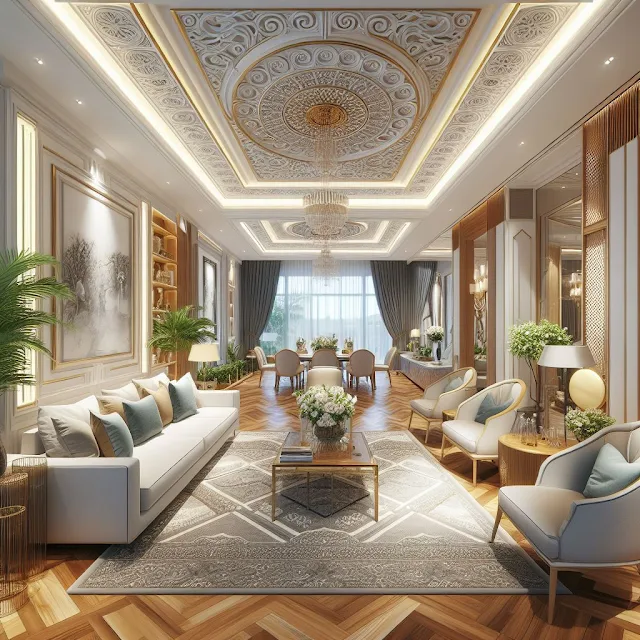
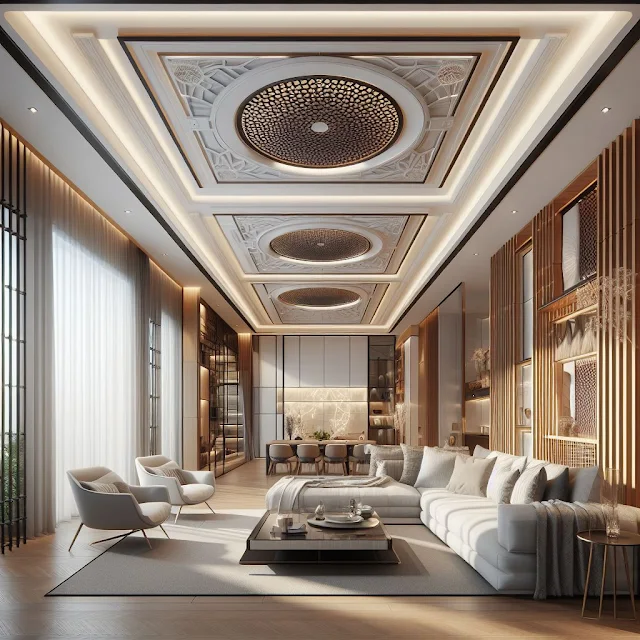

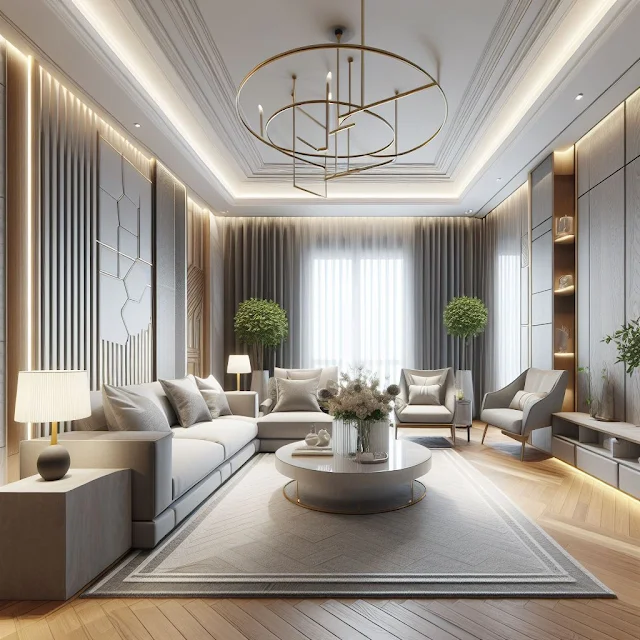

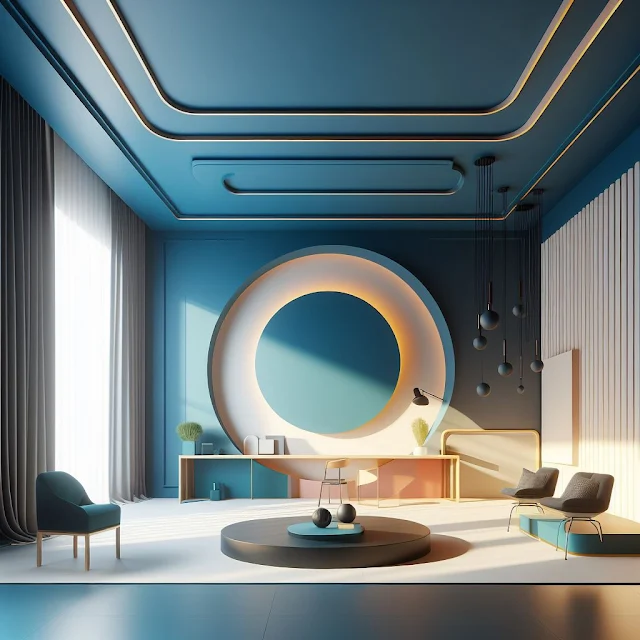
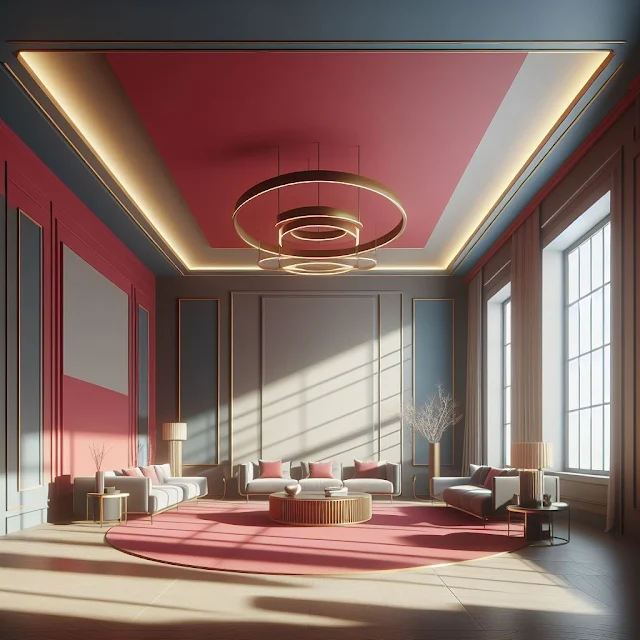




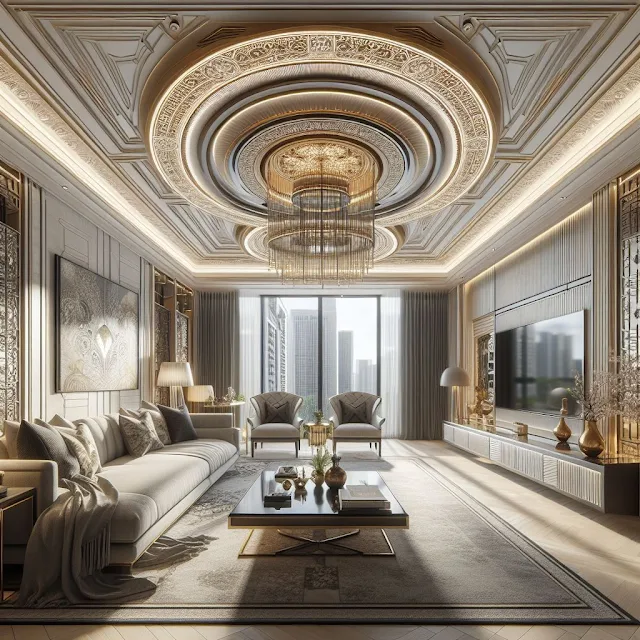
Post a Comment for "How to Make the House Ceiling Look More Beautiful"